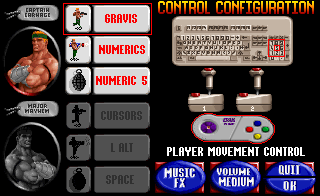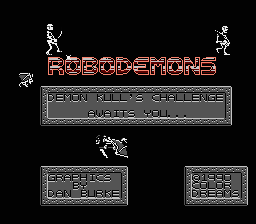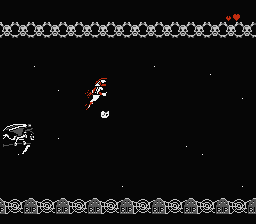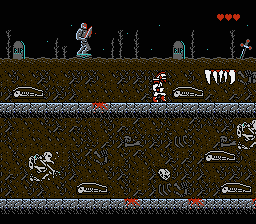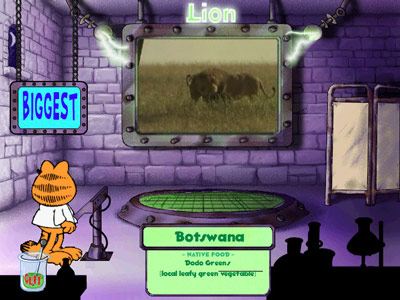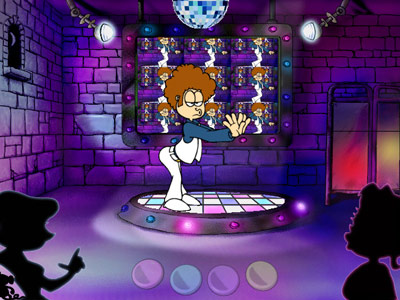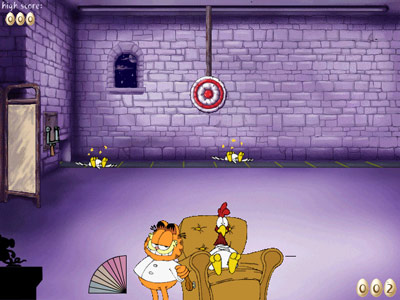Speedy Eggbert is a title missing from MobyGames that caught my eye while perusing my big list recently. So I pull it out and, much to my chagrin, realize that it’s another accursed eGames title. Maybe today’s gaming excursion will be quick since I have such a dismal record with eGames titles thus far. Will I be 0 for 3, with a generous helping of spyware to show for it? Let’s find out.
I ran my spyware checker, installed the game, and then ran my spyware checker immediately afterwards. That same Conducent TimeSink tsad.dll file somehow found its way onto my machine between the two spyware check runs. I’m not exactly endeared when I see splash dialogs like this (read the small print carefully and note the relative sizes of the buttons):

I did some Googling for “egames spyware” and found that the state of Michigan actually did go after eGames for their spyware-related activities. Sometime in 2001, they said they would stop. This game predates said agreement. But I need to keep the DLL installed long enough to play the game. I take small comfort in the knowledge that the spyware was developed long before my web browser (Firefox) and hopefully doesn’t know how to investigate its information. Then again, Firefox’s on-disk data structures and file locations might be similar to earlier Netscape versions.
I next delve into the manual since I reason that this might be the only exposure I get to the game. It’s is allegedly a side-scrolling action game. These eGames titles always sound like such delightful, simplistic little romps that I actually would like to experience. Much to my surprise, this eGames game actually runs!
I can attest that we have an actual game here, and quite a lot of game, I should add. Speedy Eggbert is a side scrolling game, and parallax no less, which I always love — takes me back to the old SNES/Genesis days. It’s incredibly simplistic as far as these types of games go, and that fits right into my plan. Our hero — who, indeed, happens to be egg-shaped — wanders through countless colorful stages. He can walk left or right in well-animated motions, though the transition between the 2 directions is the slowest I have yet seen in any such game. He can duck and look down at the same time, or look up. Being able to scan up and down is remarkably useful in this game for locating unseen threats. But his real power is his vertical leap. There are two control buttons: one for short jump and the other for high jump. The challenge comes in knowing when to use which, and where, and keeping the two buttons straight.
There is a brief tutorial stage in a forest. After this, you unlock most of the areas in the game via a macro-level map. There are dozens of total levels and you don’t need to explore them in sequence. This is the first level that you can choose from– I call it “Housing Projects”:
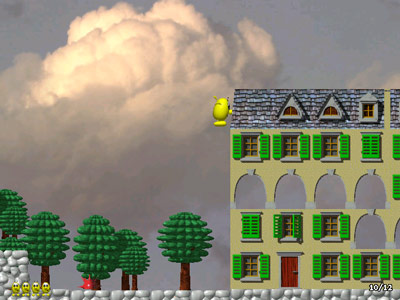
Notice the presence of Lego-influenced trees. Playing this game made me realize something about game plots. While the backstory of a computer game is often the subject of ridicule, it’s somehow strangely necessary. All throughout Speedy Eggbert I found myself wondering what was going on and why our protaganist was doing this. I have no idea what the houses in the above level are for, why the surrounding area is mined, or what Eggbert hopes to achieve. I just know that the above screenshot depicts where I got stuck on that particular level since he can’t jump quite that high. No matter; there are plenty more to choose from.
Another area looks like you’re infiltrating a techno-fortress in outer space. This is sort of a make-your-own-backstory game. The first section has you jumping from platform to platform. I found myself wondering what would happen if you fell off a platform in space– fall forever? No, it turns out that there is space lava just beneath the platforms which hard boils our hero. Another stage is yet another techno-fortress which happens to be substantially bluer than the previous. Then we get into some real eye candy– I named this level “The Happy Fun Candyland of Suffering”:
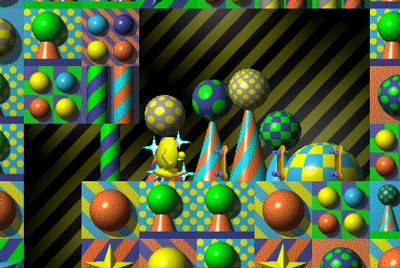
Bright, colorful, playful, and full of unspeakable danger. In the above screenshot, Eggbert has eaten a lollipop powerup. The simple sugars give him a temporary rush which increases his jumping ability, enabling him to reach this platform with a selection of skateboards. A skateboard allows the player to cruise through a narrow hallway lined with bombs. The skateboard will detonate the bombs without hurting Eggbert. This application further serves to highlight defects in the game’s internal logic, but oh well.
I’m not sure if I like this next level or not. I call it “Glyphland” and I could assert that either A) it’s highly creative; or B) that the designers were getting extremely tired and/or lazy and just threw something together to meet some artificial deadline or goal.
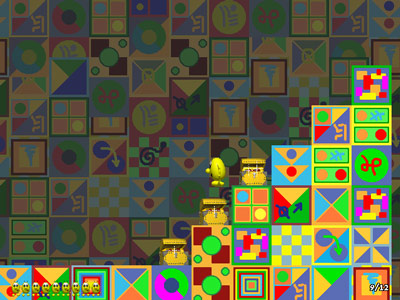
That’s not all, though! The game features networked multiplayer via modem, serial cable, IPX, or TCP/IP. I have no idea what the multiplayer mode entails since the manual did not go into details, and it’s extraordinarily unlikely that I could convince someone else to try this game. Another interesting value add is that the game comes with a complete level designer, likely the same one that the creators used to build the game. Create your own mission by selecting background, scroll type, and music (10 tunes to choose from), and get to work laying down the level. This menu gives you a good idea of the various items and threats that are possible in the game if you didn’t get too far into any particular level.
Technically, Speedy Eggbert is written in Visual Basic, just as all eGames titles appear to be (at least the 3 I have seen so far). All of its data files have the extension .blp. Inside, they are actually a mixture of WAV files for sound, BMP files for graphics, and MIDI files for music (I actually sort of dig the music and can save these before I blow away the spyware-laden game). Then, there is a custom, constant-sized data format, about 50 KB each, which defines a level layout. An interested hacker could probably figure out the data format pretty easily using the level designer.

